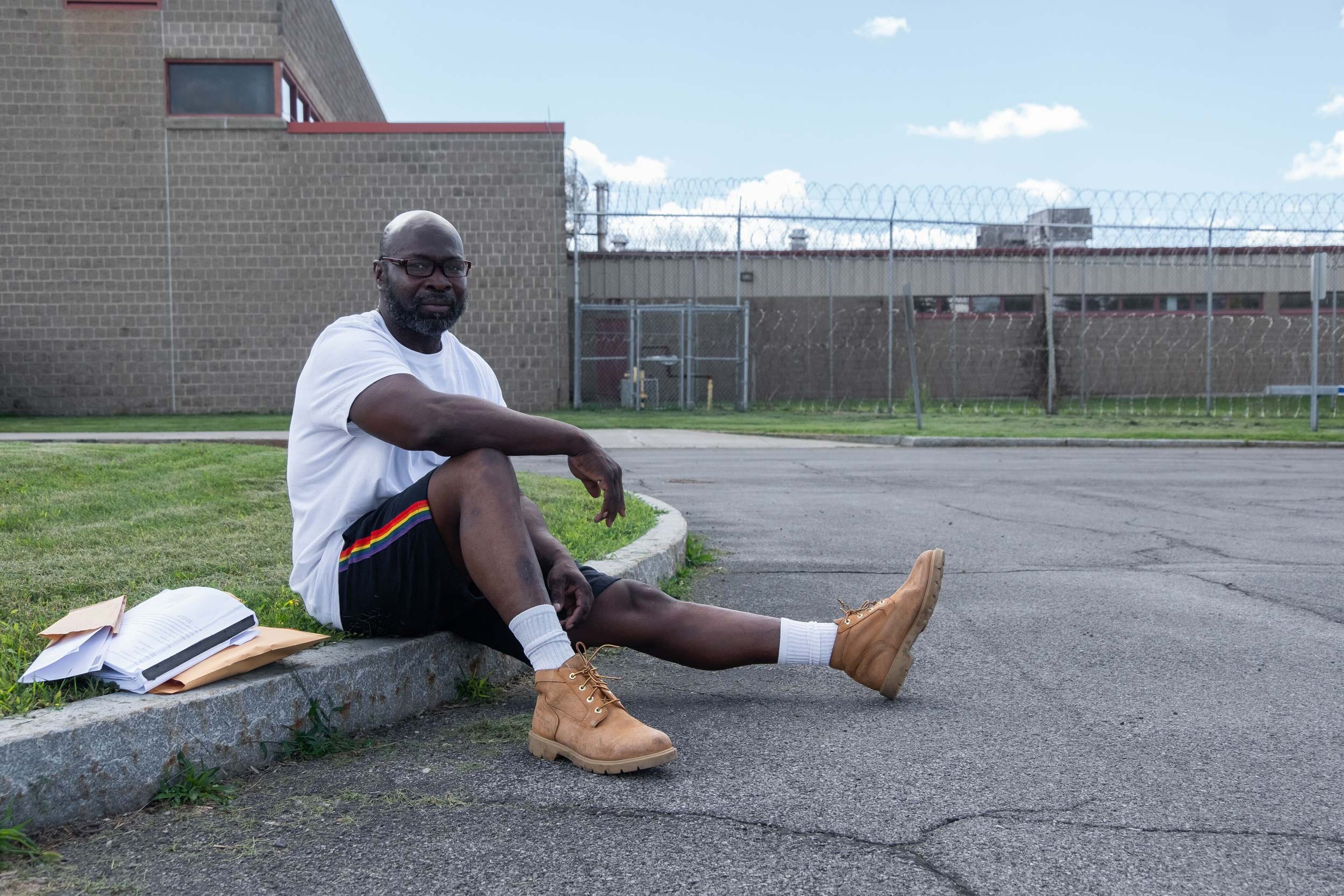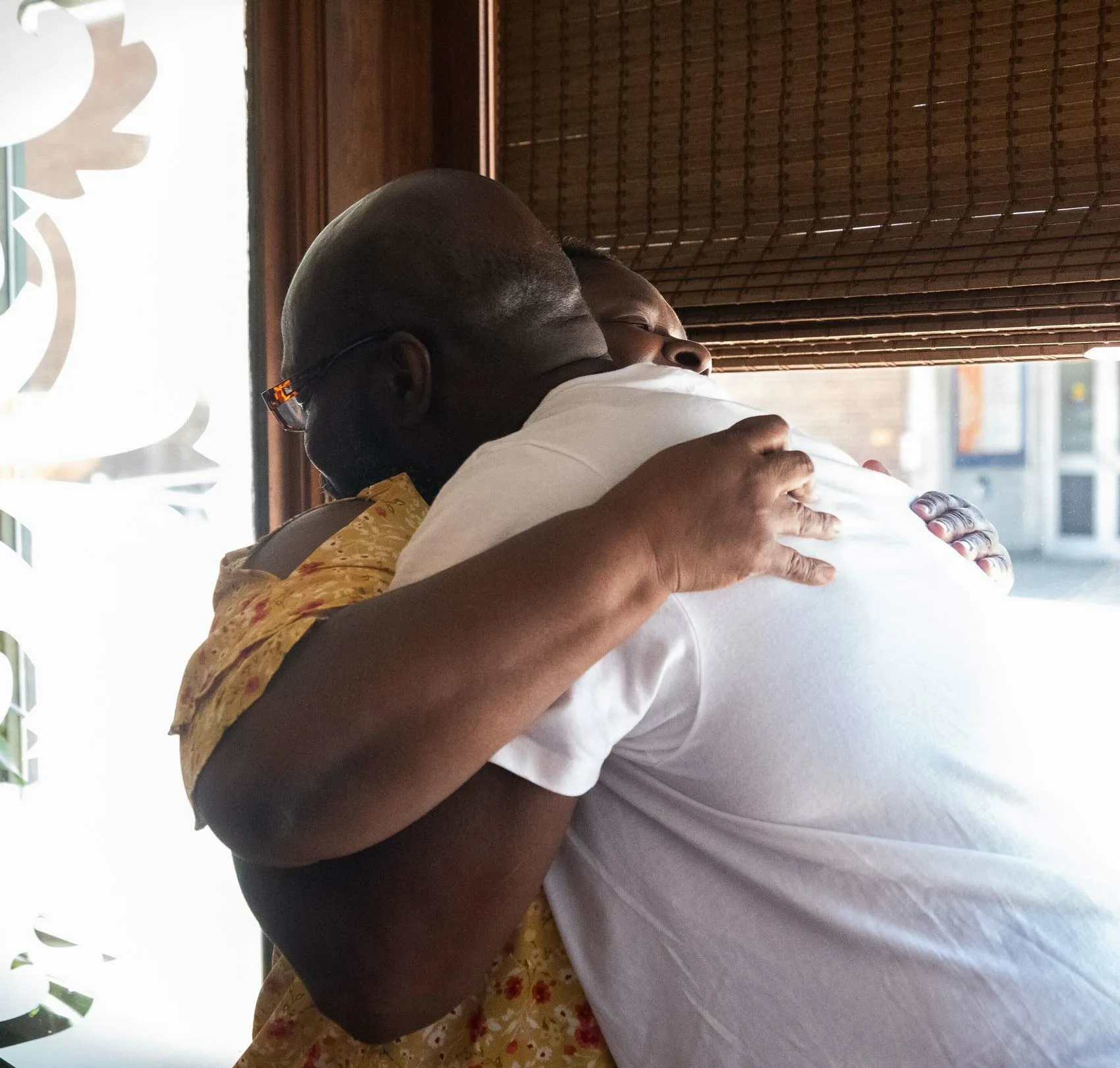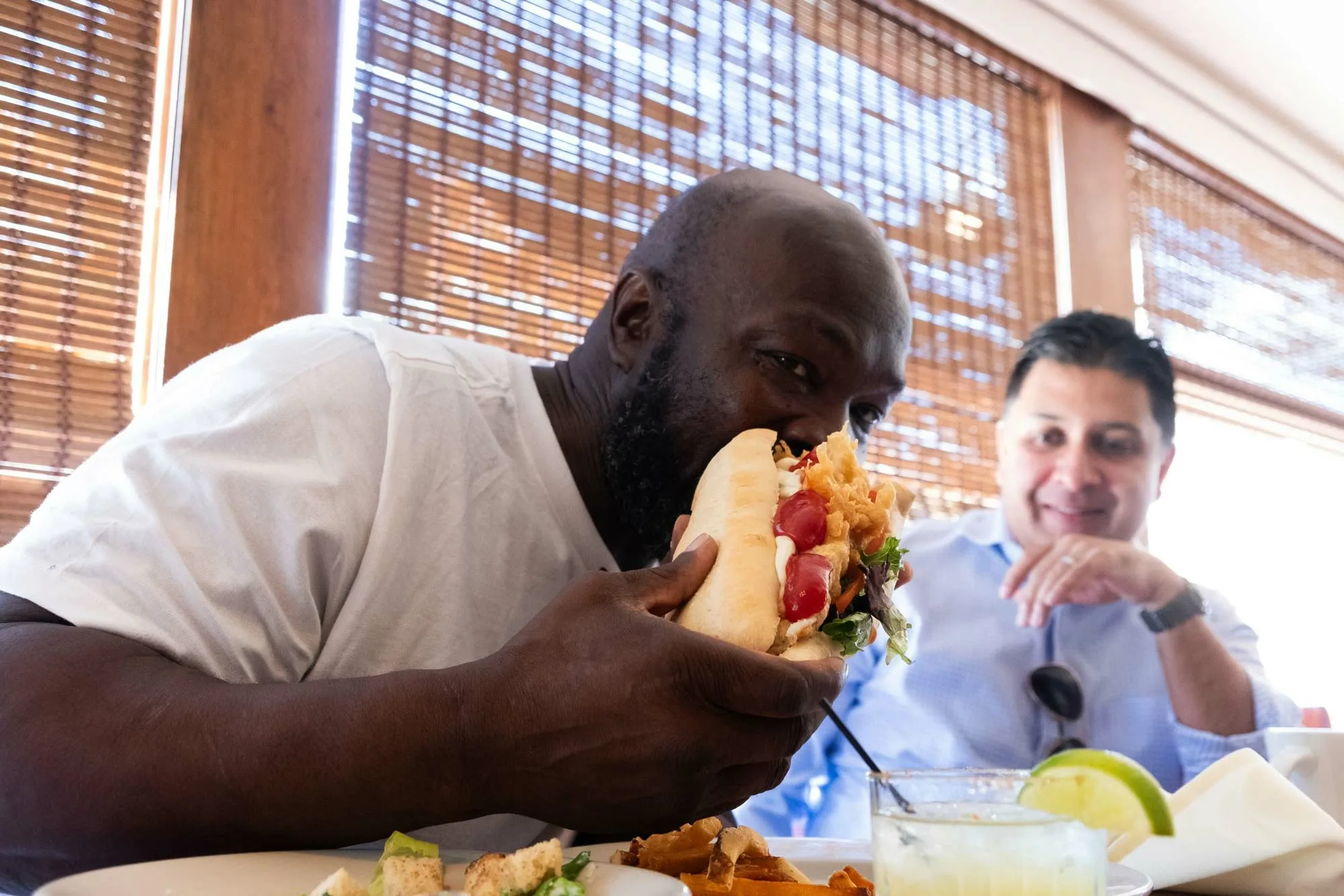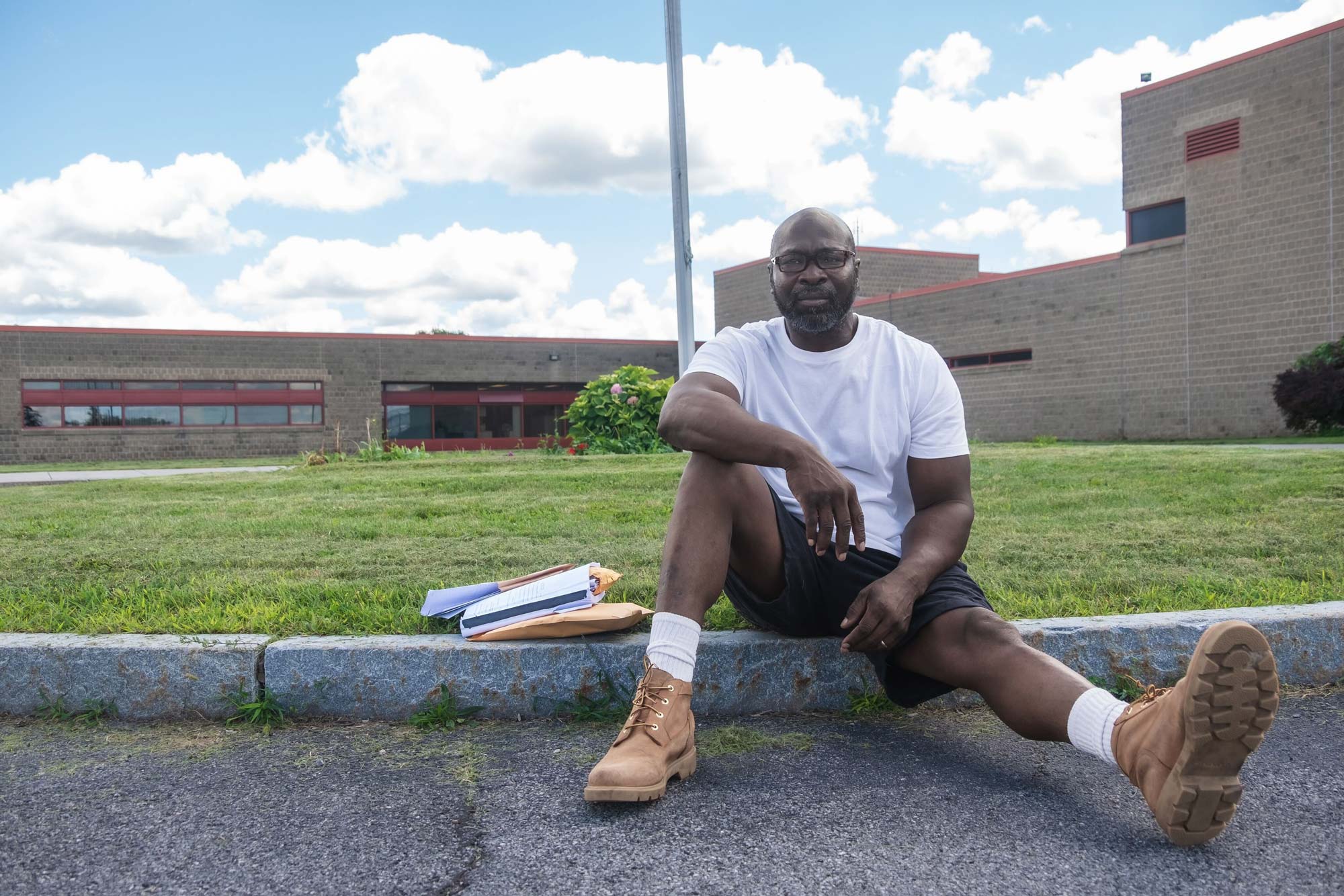Carlton Lewis Exonerated Following 31 Years of Wrongful Conviction for Second-degree Murder in Syracuse, NY
An incentivized witness, a false confession, and hair microscopy – a problematic forensic technique – contributed to Mr. Lewis’ wrongful conviction.
Exoneration 08.10.23 By Innocence Staff
(August 10, 2023 – Syracuse, New York) Carlton Lewis was exonerated today in Syracuse, New York, more than three decades after he was wrongly convicted and incarcerated for second-degree murder in 1992. New DNA testing results exclude Mr. Lewis from the scene of the crime and confirm his continued assertion of innocence. No crime scene evidence links Mr. Lewis to the murder.
Three common contributing factors to wrongful conviction were present in the prosecution’s case against Mr. Lewis in 1992: the testimony of an incentivized witness; a false confession, and hair microscopy – a forensic technique that the Federal Bureau of Investigation has acknowledged leads to inaccurate results and wrongful convictions.
“I always believed in myself, I’ve always fought for the truth.” Mr. Lewis said. “I’ve known all along I’m innocent, but it feels good to finally have the court acknowledge it, to finally have no more lies hanging over my head. I can finally sleep … I just wish all my family members who saw this happen to me were still alive to see this day. That’s what hurts the most, that they’re not able to be here for this. But the truth is finally out, and I thank everyone who believed in me and fought for me.”
“This has been a long, hard fight for Mr. Lewis,” said Adnan Sultan, a senior staff attorney at Innocence Project who represents Mr. Lewis. “The criminal legal system stole over 30 years from Mr. Lewis. Today he is a 57-year-old man who has shown tremendous perseverance and resilience. This is a bittersweet day. We are thrilled that Mr. Lewis is finally being exonerated, but he should have never been convicted of this crime in the first place.”
An Incentivized Witness and a False Confession
On the morning of February 7, 1990, Cheryl Coleman was found dead in an empty apartment in Syracuse, New York. She had been sexually assaulted and beaten with a two-by-four piece of wood that was found near her body.
Upon arriving on the scene, a police officer observed blood on the walls in the hallway, on the rug, and on the two-by-four wooden board. On the same day that Ms. Coleman’s body was discovered, the Syracuse Police Department developed a list of suspects, which included men who frequented nearby bars, including William McKee, Gregory Brown, and Mr. Lewis.
Police first questioned Mr. Lewis at his home on February 10, 1990. Mr. Lewis told police in a sworn statement that he was at home with his wife on the night of the murder. His wife corroborated his account.
William McKee, who was 16 years old, was interviewed twice by investigators over the course of two days – and gave differing accounts to police each time. In his first sworn affidavit, Mr. McKee described being at a bar on the night of the murder when he saw an unfamiliar woman approach a man he identified as Mr. Lewis across the street. Mr. McKee stated that he then observed the two go into a house on the corner and come out 15 to 20 minutes later. Mr. McKee told police that Mr. Lewis then began to pull on him to get him to come into the house. At this point, Mr. McKee said he asked “What did you do, Carl?” and said that Mr. Lewis replied “It’s my business.”
After Mr. McKee’s first interview with police, Mr. Lewis was questioned again 10 days after his first interview. The circumstances of Mr. Lewis’ second interrogation present a number of factors known to cause false confessions. Mr. Lewis was taken from his home at 12:15 a.m. and questioned, without the presence of a lawyer, for hours into the morning until he signed a statement he neither read nor wrote on his own.
Under these circumstances. Mr. Lewis’ second statement was vastly different from his earlier, corroborated account in which he told police that he was at home with his wife on the night of the murder. Instead, Mr. Lewis signed a statement he couldn’t read that said he was present while Mr. Brown had sex with Ms. Coleman and then stood by as Mr. Brown killed her.
Research shows that false confessions can take place due to law enforcement’s use of intimidation, coercive tactics, isolation during interrogations, deceptive methods that include lying about evidence, and more. An innocent person may falsely confess because of increased stress, mental exhaustion, or promises of lenient sentences. False confessions have contributed to 27% of the Innocence Project’s 245 victories to date.
The second time police interviewed Mr. McKee, his story changed. Mr. McKee said he lied in his first statement and wanted to clear up inconsistencies. This time, Mr. McKee said that he saw Mr. Brown and Mr. Lewis have sex with Ms. Coleman and that Mr. Brown, and later Mr. Lewis, struck Ms. Coleman with the two-by-four piece of wood. In exchange for this testimony, Mr. McKee received a reduced sentence and charge for his role in the murder. Instead of a sentence of 25 years to life, Mr. McKee was made eligible for parole after six years.
Following Mr. McKee’s second statement to police, Mr. Lewis was arrested on February 20, 1990, for murder in the second degree.
A Problematic Case
The State’s case against Mr. Lewis relied on Mr. McKee’s contradictory testimony, Mr. Lewis’s false confession, and problematic evidence in the form of hair microscopy. The State claimed that hairs found at the scene of the crime matched Mr. Lewis. However, hair matching is known to lead to inaccurate results and wrongful convictions, a fact the FBI has since acknowledged. Nevertheless, Mr. Lewis and Mr. Brown were both convicted of murder at the first trial.
Mr. Lewis’ conviction was overturned on appeal, and he was retried separately from Mr. Brown. The State relied on the same basic theory in the second trial. The defense did not call any of its own witnesses, relying instead on cross-examination. It tried to highlight the lack of credibility of the State’s incentivized witness, Mr. McKee, and point out the inherent flaws in the use of hair microscopy. At the second trial, Mr. Lewis was found guilty and sentenced to 20 years to life in prison for murder in the second degree.
DNA Testing Excludes Mr. Lewis from the Crime Scene
During the post-conviction investigation, the Innocence Project ordered DNA testing of the evidence, including a rape kit. No crime scene evidence linked Mr. Lewis to the murder and sexual assault. DNA results from the semen samples on the vaginal swab and the stain on Ms. Coleman’s pants excluded Mr. Lewis as the source in both samples. Results from other stains on Ms. Coleman’s pants, which contained non-sperm DNA fraction mixtures, also excluded Mr. Lewis as a source.
Additional DNA testing performed on the two-by-four board further excluded Mr. Lewis as a potential source of any biological material left behind, meaning Mr. Lewis never handled the murder weapon. These results further contradict Mr. McKee’s testimony that Mr. Lewis struck Ms. Coleman with the board after she was hit by Mr. Brown. The DNA results also prove that Mr. Lewis falsely confessed.
Now that he is finally exonerated, Mr. Lewis said he is looking forward to spending time with his family and getting his life back now that this wrongful conviction is behind him.
Mr. Lewis is represented by Adnan Sultan at the Innocence Project.





Leave a Reply
Thank you for visiting us. You can learn more about how we consider cases here. Please avoid sharing any personal information in the comments below and join us in making this a hate-speech free and safe space for everyone.